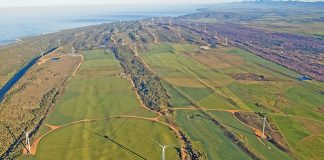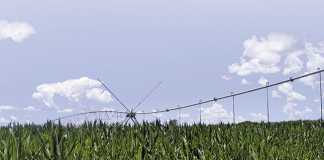
Photo: FW Archive
Electricity prices continue to escalate and supply remains unreliable. Considering this, it makes intuitive sense to take at least some of your farm’s production processes off the grid. However, using alternative energy as your only source is not financially viable, according to Prof Alan Brent, associate director of the Centre for Renewable and Sustainable Energy Studies (CRSES) at Stellenbosch University.
His reasoning is that South Africa’s electricity price is still relatively low – despite increasing by 170% over the past five years – in comparison with other sources of electricity. CRSES has carried out various feasibility studies for clients over the past few years. In most, high set-up costs meant that a complete switch to alternative energies
was not economically viable – unless such a move was subsidised or producers were able to feed energy back into the national grid.
Brent explains that feeding energy back into the grid would result in cost-savings by turning the meter backwards, after consultation with Eskom or the relevant municipality. This would apply only to a digital meter, however. In some countries, governments encourage consumers to feed energy back into the grid through financial incentives. In South Africa, government authorities are still trying to determine how to approach this option. Currently, Cape Town and Nelson Mandela Bay Metropolitan municipalities allow consumers who have been given permission to feed energy back into the grid.
Solar: doing the maths
Brent maintains that solar energy is the most affordable alternative energy option in South Africa. “It’s much cheaper to go solar and maintain a solar installation than to construct and maintain wind or water turbines,” he says.
However, the cost of the project and the method of payment have a major impact on the financial viability of such a project. At the end of 2011, the CRSES conducted a comparative cost analysis for a wine cellar going completely and partially off the grid. In the former scenario, it would have cost about R9 million to install a 300kW tilt photovoltaic plant (PV). The cost of PV cell modules amounted to 55% of the total cost. Operational and maintenance costs were calculated at 0,38% of the initial installed capital cost. This excluded the rebuilding and replacement of the inverter, which should be done every seven to 10 years.
The CRSES calculated that it would cost the cellar R11,2 million over 20 years to install and maintain the plant if it were financed without a loan. Electricity costs were estimated at R26,9 million, and it was calculated that the plant would pay for itself in 11 years. If the cellar had acquired a 40% loan (R3,5 million at an interest rate of 10%), the system would have broken even in 16 years. Financing the entire project would not have made economic sense (see Table 1).

According to the analysis, if the cellar went partially off the grid, the cost of installing a solar plant with a 15kW capacity would be R500 000. The project would break even in nine to 16 years, depending on the price of electricity. For example, the cellar would break even at an earlier date if it used solar energy at times when electricity was more expensive (see Table 2).

Wind energy
In an analysis for another wine cellar, the CRSES studied the feasibility of converting a water treatment plant to wind energy. It found that the project, which involved a total energy demand of 35,2kW, would not be financially justifiable, even if the wind turbine were paid for in cash and fed electricity directly into the grid so that no batteries were needed to store energy.
Over 30 years, the producers would lose R99 000 if a conservative price model were used for electricity prices, and nearly R26 000 if a more optimistic model were used. The total installation was limited to a budget of R500 000 and the centre specifically looked at the use of four 3kW Whisper 500 turbines to supply the energy. These turbines have a 4,5m rotor diameter and would have been mounted on masts of 25m.
The cost of the turbines depended on the mast, at R144 000 for a solid pole and R109 000 for a wire guide mast. Each turbine also needed an inverter to be able to feed back into the grid, at a cost of R28 000 per unit. Installation costs were estimated at around R8 500 per turbine, which has a life expectancy of 30 years.
Ask the experts
Brent stresses that these are merely case studies and costs will vary depending on the type of installation required, the alternative energy equipment used and the supplier’s billing tariffs, among others. He advises producers to make use of an independent energy consultant before installing alternative energy.
“It’s better to speak to an independent company than to suppliers, as suppliers will try to push their own products.”
While it might not make economic sense today to switch entirely to an alternative source of energy, these sources will become increasingly attractive, says Brent. The reasons are twofold: electricity prices will continue to rise and the cost of alternative technology will drop as more and more consumers use it.
For now, however, producers should look at ways to improve energy efficiency and reduce costs before moving to alternative sources.
Phone Prof Alan Brent on 021 808 9530 or email [email protected].
This article was originally published in 7 August 2015 issue of Farmer’s Weekly.













